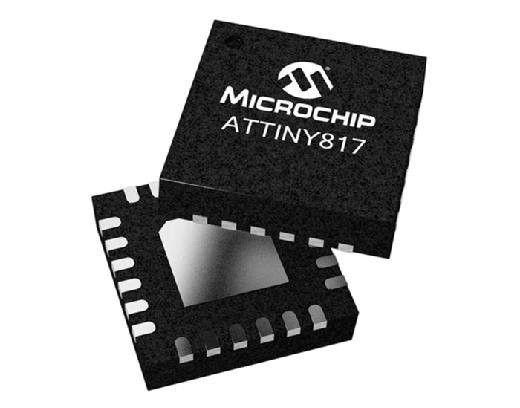Are you curious about the tiny component that powers almost every electronic device around you? WHAT.EDU.VN is here to help. A transistor is a semiconductor device that acts as an electronic switch and amplifier, controlling the flow of electrical current and voltage. This article explores what a transistor is, its functions, types, and why it’s essential in modern technology. Learn about transistors, semiconductor devices, and signal amplification.
1. What Is a Transistor and What Does It Do?
A transistor is a miniature semiconductor device that regulates current or voltage flow, amplifies electrical signals, and acts as a switch. Think of it as a tiny valve that controls the flow of electricity in electronic circuits, allowing for precise control and manipulation of electronic signals.
1.1. Core Functions of a Transistor
- Switching: Transistors can act as switches, turning electronic circuits on or off.
- Amplification: They can amplify weak electronic signals, making them stronger.
- Regulation: Transistors regulate the flow of current and voltage in circuits.
1.2. What Is the Basic Structure of a Transistor?
Typically, a transistor consists of three layers, or terminals, of a semiconductor material:
- Emitter: Supplies charge carriers (electrons or holes).
- Base: Controls the flow of charge carriers between the emitter and collector.
- Collector: Collects the charge carriers.
 Graphic showing Microchip Technology
Graphic showing Microchip Technology
1.3. What Is the Importance of Transistors in Modern Electronics?
Transistors are fundamental components in modern electronics because they are:
- Essential in Integrated Circuits (ICs): Transistors are the building blocks of ICs, which are used in almost every electronic device.
- Used in Microprocessors: Microprocessors contain millions of transistors, enabling complex computing functions.
- Key in Memory Chips: Transistors drive computer memory chips and storage devices.
2. Why Are Transistors Important in the Tech World?
Transistors revolutionized the tech world by replacing bulky vacuum tubes. Their small size, low power consumption, and high reliability made them essential for the miniaturization and advancement of electronics.
2.1. How Did Transistors Revolutionize Electronics?
The invention of the transistor at Bell Laboratories in 1947 marked a turning point in electronics.
- Replaced Vacuum Tubes: Transistors are smaller, lighter, and more efficient than vacuum tubes.
- Enabled Miniaturization: The use of transistors led to smaller, more portable electronic devices.
- Improved Efficiency: Transistors consume less power and generate less heat than vacuum tubes.
2.2. What Are the Benefits of Using Transistors?
Transistors offer numerous advantages over vacuum tubes:
- Smaller Size: Transistors are significantly smaller, allowing for compact electronic devices.
- Lower Power Consumption: They require less power to operate, leading to energy efficiency.
- Higher Reliability: Transistors are more durable and have a longer lifespan.
- Faster Switching Speed: They can switch on and off more quickly, enabling faster processing speeds.
2.3. What Role Did Transistors Play in Moore’s Law?
Transistors are closely linked to Moore’s Law, which predicts that the number of transistors in an integrated circuit doubles approximately every two years. This miniaturization has led to exponential growth in computing power and a decrease in the cost of electronics.
3. How Do Transistors Work?
Transistors work by controlling the flow of current between the emitter and collector based on the voltage or current applied to the base. This allows them to act as switches or amplifiers in electronic circuits.
3.1. What Is the Switching Function of a Transistor?
As a switch, a transistor can turn an electronic circuit on or off.
- On State: When a voltage is applied to the base, the transistor allows current to flow from the emitter to the collector, turning the circuit on.
- Off State: When no voltage is applied to the base, the transistor blocks the flow of current, turning the circuit off.
3.2. How Do Transistors Amplify Electronic Signals?
Transistors can amplify weak electronic signals by using a small input signal to control a larger output signal.
- Small Input Signal: A small current or voltage applied to the base controls a larger current flowing from the emitter to the collector.
- Larger Output Signal: The output signal is a magnified version of the input signal, providing amplification.
3.3. What Materials Are Used to Make Transistors?
Most transistors are made from silicon, but other materials such as germanium and gallium arsenide are also used. Silicon is a semiconductor material that can be doped to control its electrical properties.
- Silicon (Si): The most common material due to its abundance and suitable electrical properties.
- Germanium (Ge): Used in some older transistors but less common today.
- Gallium Arsenide (GaAs): Used in high-frequency applications due to its superior electron mobility.
4. What Are the Different Parts of a Transistor?
A transistor has three main terminals: the emitter, the base, and the collector. Each part plays a specific role in the transistor’s operation.
4.1. What Is the Role of the Emitter?
The emitter is the terminal that supplies charge carriers (electrons or holes) to the base.
- NPN Transistors: The emitter supplies electrons to the base.
- PNP Transistors: The emitter supplies holes to the base.
4.2. What Is the Function of the Base?
The base is the terminal that controls the flow of charge carriers between the emitter and collector.
- NPN Transistors: A small positive voltage applied to the base allows electrons to flow from the emitter to the collector.
- PNP Transistors: A small negative voltage applied to the base allows holes to flow from the emitter to the collector.
4.3. What Is the Purpose of the Collector?
The collector is the terminal that collects the charge carriers from the base.
- NPN Transistors: The collector collects electrons from the base.
- PNP Transistors: The collector collects holes from the base.
5. What Are the Main Types of Transistors?
There are two main types of transistors: bipolar junction transistors (BJTs) and field-effect transistors (FETs). Each type has its own characteristics and applications.
5.1. What Is a Bipolar Junction Transistor (BJT)?
A BJT is a type of transistor that uses both electrons and holes as charge carriers.
- NPN Transistors: Consist of a p-type base between two n-type layers (emitter and collector).
- PNP Transistors: Consist of an n-type base between two p-type layers (emitter and collector).
5.2. What Is a Field-Effect Transistor (FET)?
An FET is a type of transistor that uses an electric field to control the flow of current.
- Junction Field-Effect Transistor (JFET): Uses a reverse-biased p-n junction to control current flow.
- Metal-Oxide-Semiconductor Field-Effect Transistor (MOSFET): Uses a metal-oxide layer to insulate the gate from the channel.
5.3. What Are the Differences Between BJTs and FETs?
BJTs and FETs differ in their operating principles and characteristics.
| Feature | BJT | FET |
|---|---|---|
| Charge Carriers | Both electrons and holes | Only electrons or holes |
| Input Impedance | Low | High |
| Control | Current-controlled | Voltage-controlled |
| Amplification | Good for current amplification | Good for voltage amplification |
| Applications | Amplifiers, switches, and oscillators | Low-noise amplifiers, analog switches, buffers |
6. How Are Transistors Used in Power Electronics?
Transistors are widely used in power electronics to control the flow of electrical power in devices such as power supplies, audio amplifiers, and motor drives.
6.1. What Role Do Transistors Play in Power Supplies?
Transistors are used in power supplies to switch high amounts of power on and off quickly, allowing for efficient voltage regulation.
- Switching Regulators: Transistors act as switches to convert AC voltage to DC voltage.
- Voltage Regulation: They maintain a stable output voltage despite variations in input voltage or load current.
6.2. How Are Transistors Used in Audio Amplifiers?
Transistors are used in audio amplifiers to amplify weak audio signals, making them loud enough to drive speakers.
- Signal Amplification: Transistors increase the amplitude of audio signals without distorting them.
- Power Amplification: They provide the necessary power to drive speakers and produce sound.
6.3. What Types of Transistors Are Used in Power Electronics?
Several types of transistors are used in power electronics, including BJTs, MOSFETs, and IGBTs.
- Bipolar Junction Transistors (BJTs): Used in medium-power applications.
- Metal-Oxide-Semiconductor Field-Effect Transistors (MOSFETs): Used in high-frequency and high-power applications.
- Insulated-Gate Bipolar Transistors (IGBTs): Combine the advantages of BJTs and MOSFETs, offering high current and voltage capabilities.
7. How Does the Size of a Transistor Affect Its Performance?
The size of a transistor significantly impacts its performance. Smaller transistors offer several advantages, including increased density, faster switching speeds, and lower power consumption.
7.1. Why Do Smaller Transistors Improve Performance?
Smaller transistors improve performance for several reasons:
- Increased Density: Smaller transistors allow more transistors to be packed into a microchip, increasing computational power.
- Faster Switching Speed: Electrons have less distance to travel in smaller transistors, resulting in faster switching speeds.
- Lower Power Consumption: Smaller transistors require lower voltages, reducing power consumption and heat generation.
7.2. How Does Transistor Size Affect Processing Speed?
The increased number of transistors and faster switching speeds in smaller transistors lead to improved processing speeds in computers and other electronic devices.
- More Calculations per Second: Smaller transistors enable processors to perform more calculations per second.
- Faster Data Processing: Data can be processed more quickly, improving the overall performance of electronic devices.
7.3. What Are the Implications of Moore’s Law on Transistor Size?
Moore’s Law predicts that the number of transistors in an integrated circuit doubles approximately every two years. This has led to a continuous reduction in transistor size, driving advancements in computing power and efficiency.
8. What Is the Future of Transistors?
The future of transistors involves continued miniaturization and the development of new transistor designs that offer improved performance and efficiency.
8.1. What Are Some Emerging Transistor Technologies?
Emerging transistor technologies include forksheet transistors and nanosheet structures, which are more compact and faster than current designs.
- Forksheet Transistors: Offer improved density and performance compared to FinFET transistors.
- Nanosheet Structures: Provide better electrostatic control and higher drive current.
8.2. Will Quantum Computing Replace Transistor-Based Computing?
While quantum computing has the potential to solve complex problems faster than traditional computers, it is unlikely to replace transistor-based computing entirely.
- Specialized Applications: Quantum computers are better suited for specific tasks, such as cryptography and optimization problems.
- Transistor-Based Computing for Everyday Tasks: Transistor-based technology will remain important for everyday computing tasks.
8.3. How Are Companies Innovating in Transistor Technology?
Companies like IBM are researching and testing new nanosheet innovations to improve transistor performance and efficiency. These advancements will pave the way for faster and more powerful electronic devices.
9. What Are Some Common Applications of Transistors?
Transistors are used in a wide range of applications, including amplifiers, switches, oscillators, and digital logic circuits.
9.1. How Are Transistors Used in Amplifiers?
Transistors are used in amplifiers to increase the strength of weak electronic signals.
- Audio Amplifiers: Amplify audio signals for playback through speakers.
- Radio Frequency (RF) Amplifiers: Amplify radio signals in communication systems.
- Instrumentation Amplifiers: Amplify signals from sensors and instruments.
9.2. How Do Transistors Function as Switches?
Transistors act as switches to control the flow of current in electronic circuits.
- Digital Logic Circuits: Used in computers and other digital devices to perform logical operations.
- Power Control Circuits: Control the flow of power to various components in electronic devices.
9.3. What Role Do Transistors Play in Oscillators?
Transistors are used in oscillators to generate periodic electronic signals.
- Clock Circuits: Generate clock signals for synchronizing operations in digital devices.
- RF Oscillators: Generate radio frequency signals for communication systems.
10. Frequently Asked Questions (FAQs) About Transistors
| Question | Answer |
|---|---|
| What is the main function of a transistor? | A transistor primarily functions as an electronic switch and amplifier, controlling the flow of electrical current and voltage in circuits. |
| What are the three terminals of a transistor? | The three terminals of a transistor are the emitter, base, and collector. |
| What is the difference between BJT and FET? | Bipolar Junction Transistors (BJTs) use both electrons and holes as charge carriers and are current-controlled, while Field-Effect Transistors (FETs) use either electrons or holes and are voltage-controlled. |
| Why are transistors important in electronics? | Transistors are crucial because they are small, consume less power, are more reliable than vacuum tubes, and enable the miniaturization and advancement of electronic devices. |
| What is the role of silicon in transistors? | Silicon is a semiconductor material used in transistors because it can be doped to control its electrical properties, allowing it to act as a conductor or insulator. |
| How does the size of a transistor affect its performance? | Smaller transistors allow for increased density on microchips, faster switching speeds, and lower power consumption, leading to improved overall performance. |
| What are some emerging transistor technologies? | Emerging technologies include forksheet transistors and nanosheet structures, which offer improved density, performance, and efficiency compared to current designs. |
| Can quantum computing replace transistors? | While quantum computing has potential for complex tasks, it is unlikely to replace transistor-based computing entirely, as transistor-based technology remains essential for everyday computing tasks. |
| How are transistors used in power electronics? | Transistors are used in power electronics to control the flow of electrical power in devices such as power supplies, audio amplifiers, and motor drives, allowing for efficient voltage regulation and signal amplification. |
| What are some common applications of transistors? | Common applications include amplifiers, switches, oscillators, and digital logic circuits, where transistors control and manipulate electronic signals to perform various functions. |
Understanding transistors is essential for anyone interested in electronics and technology. If you have more questions or need further clarification, don’t hesitate to ask.
Do you have any burning questions about transistors or other tech topics? Visit what.edu.vn today to ask your questions and get free, expert answers! Our team of knowledgeable professionals is ready to help you understand the complexities of technology. Contact us at 888 Question City Plaza, Seattle, WA 98101, United States, or reach out via WhatsApp at +1 (206) 555-7890. We’re here to make learning easy and accessible.

